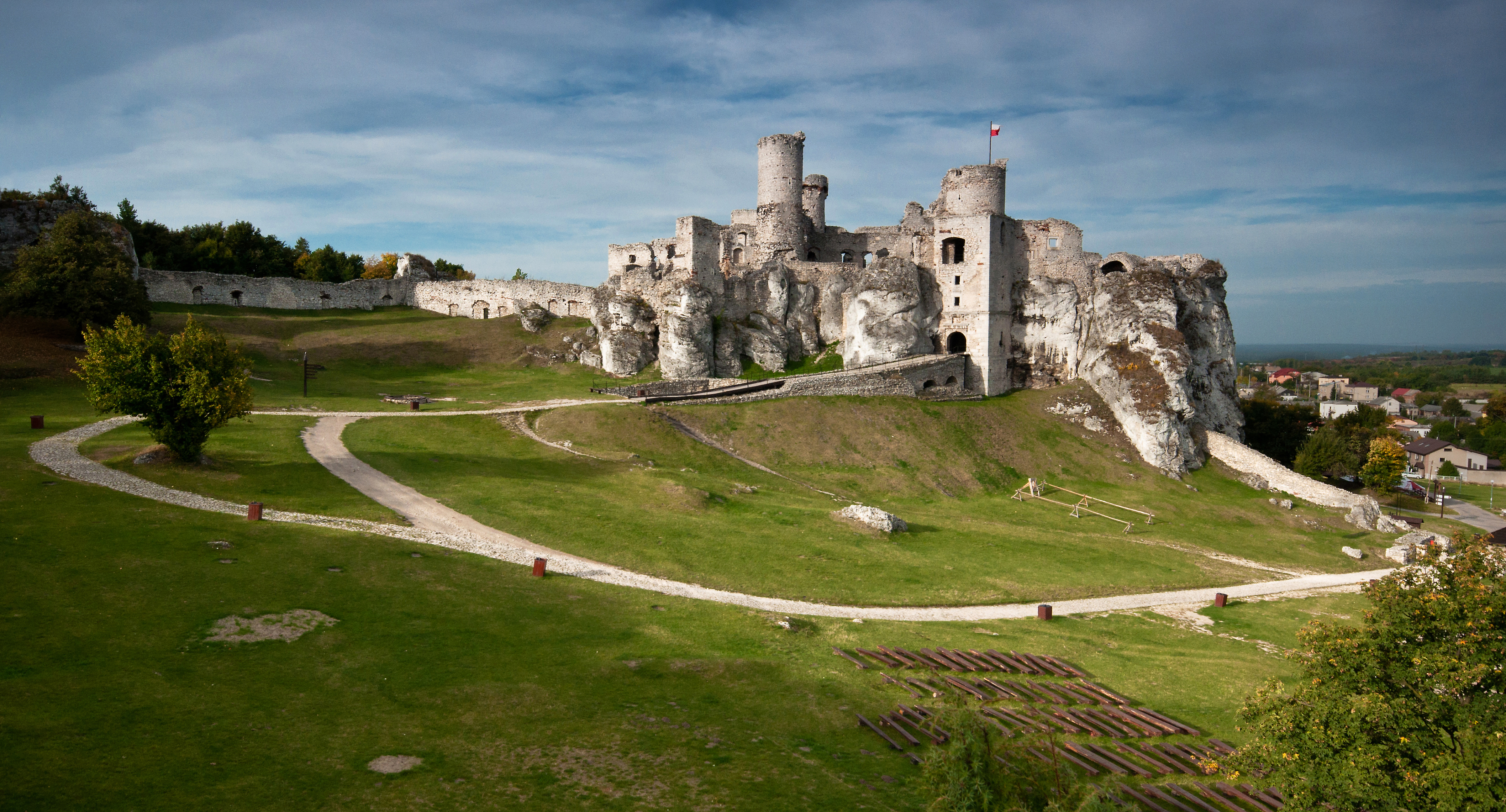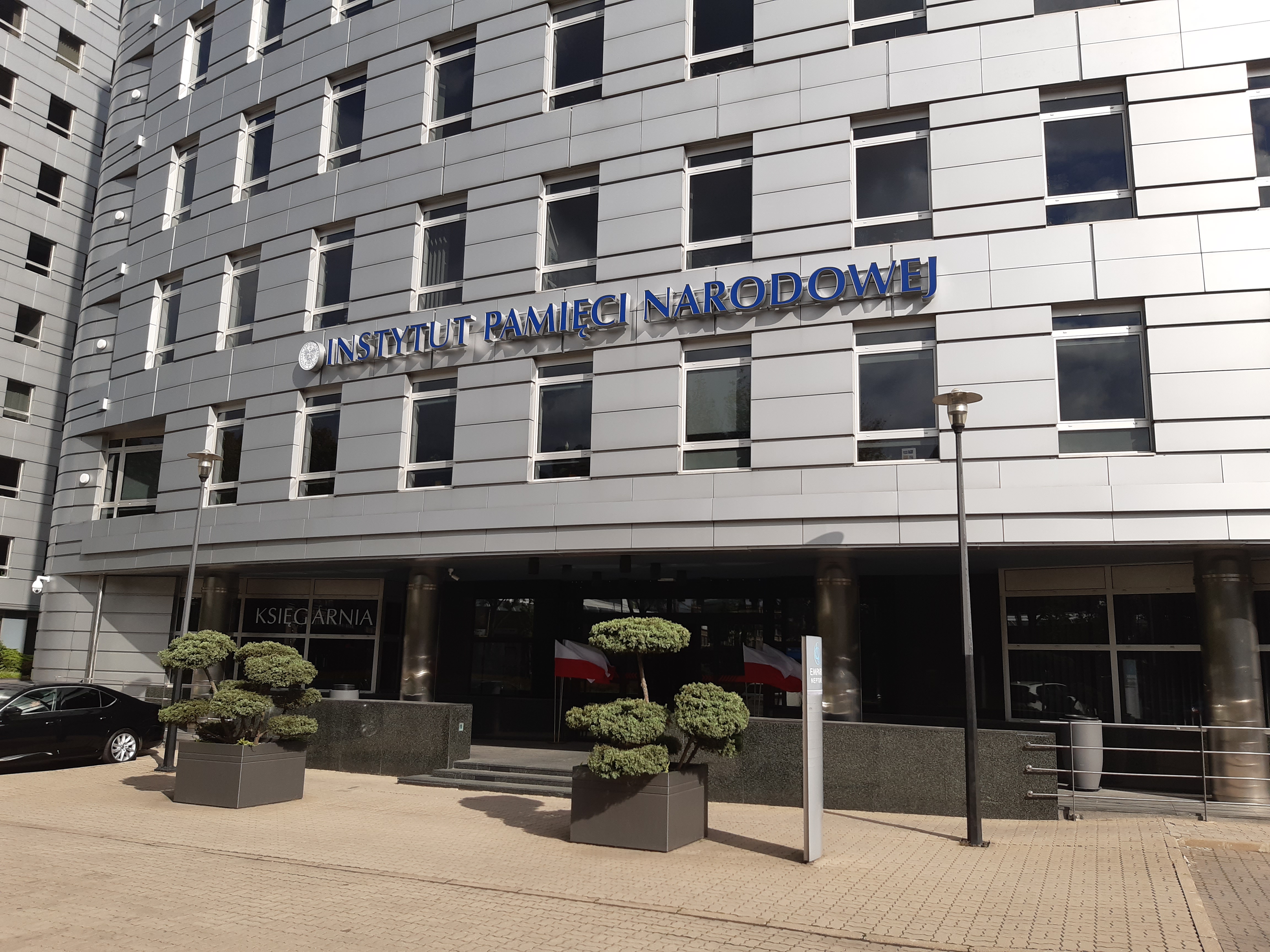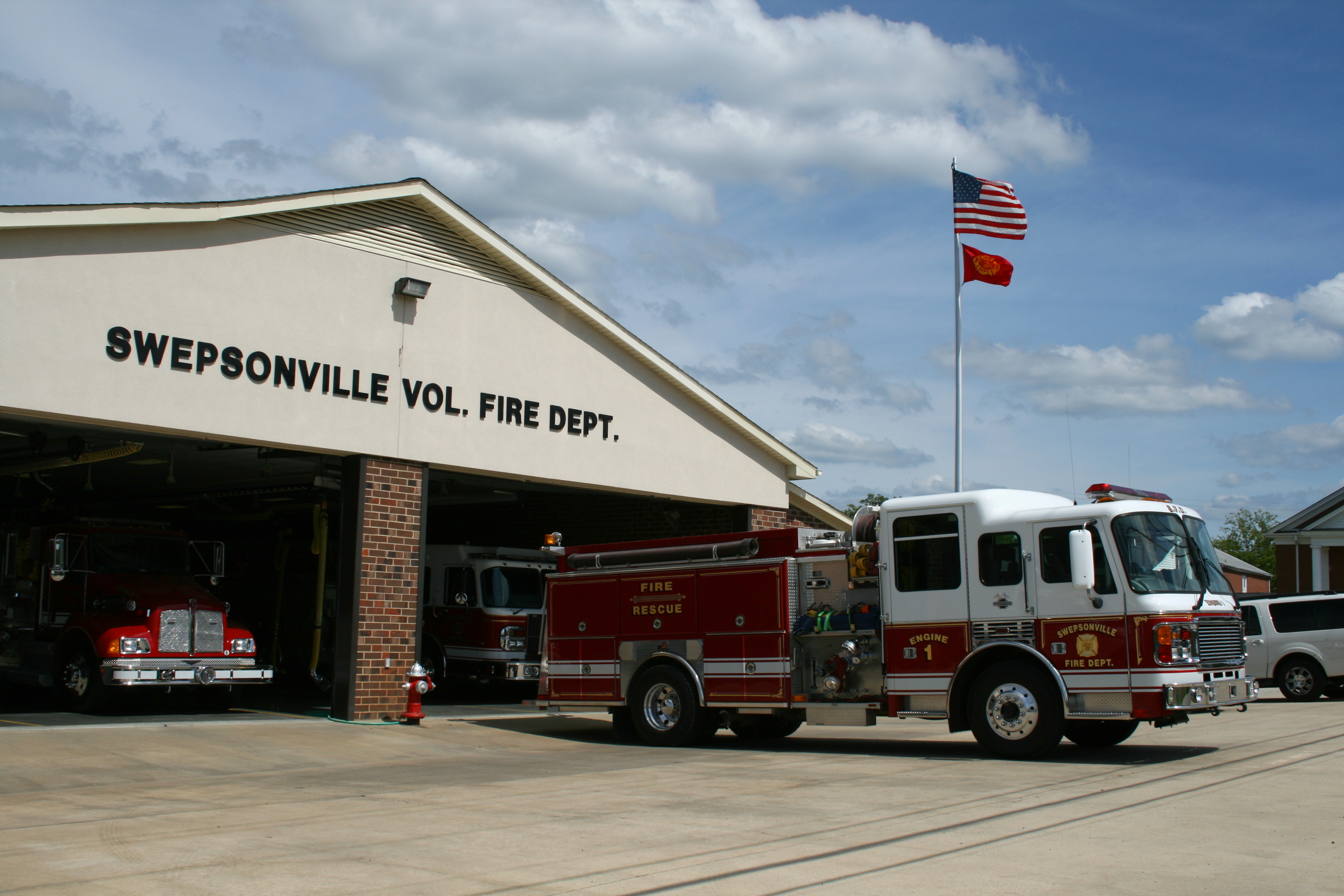|
Tucznawa
Tucznawa (until 1960 called ''Tuczna Baba'') is a district of the city of Dąbrowa Górnicza, in Silesian Voivodeship, in southern Poland. It was included within city limits in 1977. It is located 11.5 km south-east from the city centre and along the route Dąbrowa Górnicza – Zawiercie. Its neighbouring districts are: Sikorka and Bugaj. Tucznawa itself is divided into a few smaller parts: Smardz, Piaski, Rogatka, New Bugaj and Przymiarki (some sources recognize the last as a separate district). The majority of buildings in the district are single-family homes of country temper, with neighbouring gardens. History The original name of the district (village) is ''Tuczno Baba'' (''Tuczno Baba'') or ''Tuczna Baba'' (which means fat woman). The first records about the village are from 1298. In the late 13th century it was a part of the parish in Sławków. It had stayed in that parish until 1495, when it was moved to the newly-arisen parish in Chruszczobród. Tucznawa was ... [...More Info...] [...Related Items...] OR: [Wikipedia] [Google] [Baidu] |
Dąbrowa Górnicza
Dąbrowa Górnicza is a city in Zagłębie Dąbrowskie, southern Poland, near Katowice and Sosnowiec. It is located in eastern part of the Silesian Voivodeship, on the Czarna Przemsza and Biała Przemsza rivers (tributaries of the Vistula, see Przemsza). Even though Dąbrowa Górnicza belongs to the historic province of Lesser Poland, it now is situated in the Silesian Voivodeship (since 1999), and previously (1975–1998) it was in Katowice Voivodeship. Dąbrowa Górnicza is one of the cities of the Katowice urban area (2.7 million people), and within the greater Silesian metropolitan area (5.2 million people). The population of the city itself as of December 2021 is 116,971. Area and districts Dąbrowa Górnicza is the largest city of the province and the 9th largest in Poland in terms of territory, with total area of 188 square kilometers. The city lies among the hills, at 258 to 390 meters above sea level. Dąbrowa Górnicza borders Będzin County, Zawiercie Co ... [...More Info...] [...Related Items...] OR: [Wikipedia] [Google] [Baidu] |
Złoty Potok, Silesian Voivodeship
Złoty Potok is a village in the administrative district of Gmina Janów, within Częstochowa County, Silesian Voivodeship, in southern Poland. It lies approximately south of Janów, south-east of Częstochowa, and north-east of the regional capital Katowice. The village is a popular destination for Polish tourists during the summer months, as it hosts major festivals such as the International Folk Festival and Lato Filmowe (Summer of Movies). History and sights The settlement dates back to the Early Middle Ages. It was the site of an early medieval stronghold of the Polish tribes, which is now an archaeological site. It became part of the emerging Polish state in the 10th century. In the 19th century a palace by Raczyński family, and a mansion of Krasiński family, were built here. In the Krasińscy mansion there is a museum dedicated to the Polish poet Zygmunt Krasiński. The village church dates from the mid 13th century, is among the oldest in Poland. In September 1 ... [...More Info...] [...Related Items...] OR: [Wikipedia] [Google] [Baidu] |
Ogrodzieniec
Ogrodzieniec is a town in Zawiercie County, Silesian Voivodeship, Poland, with 4,282 inhabitants (2019). It is noted for the extensive ruins of a medieval castle. Ogrodzieniec is a part of Lesser Poland. Ogrodzieniec lies among the hills of Lesser Poland Upland, on the outskirts of Zagłębie Dąbrowskie. The town has an area of 28 km2, and is located approximately 400 meters above sea level. In the south and west, Ogrodzieniec is surrounded by forests. History The origins of the town date back to the 11th century. It was a forest settlement, with a wooden castle built along the border of Lesser Poland and Silesia. In 1241, during the first Mongol invasion of Poland, the village and the castle were burned, and afterwards, a new, stone castle was built. Ogrodzieniec received its Magdeburg rights town charter in 1386. It was a local trade center, with merchants and artisans, many of them Jewish. Furthermore, enormous forests attracted noble hunters, including Polish kings. ... [...More Info...] [...Related Items...] OR: [Wikipedia] [Google] [Baidu] |
Kraków Voivodeship (14th Century – 1795)
The Kraków Voivodeship ( la, Palatinatus Cracoviensis, links=no, pl, Województwo Krakowskie, links=no) a voivodeship (province) in the Kingdom of Poland from the 14th century to the partition of Poland in 1795 (see History of Poland during the Piast dynasty, Kingdom of Poland (1385–1569), and Polish–Lithuanian Commonwealth). Located in the southwestern corner of the country, it was part of the Lesser Poland province (together with two other voivodeships of Poland: Sandomierz Voivodeship, and Lublin Voivodeship). Kraków Voivodeship emerged from the Duchy of Kraków, which was created as Seniorate Province in the Testament of Bolesław III Krzywousty (1138). According to Zygmunt Gloger, it was one of the richest provinces of the Kingdom of Poland, with salt mines in Bochnia and Wieliczka, silver and lead mines in Olkusz, and very fertile soil around Proszowice. Its boundaries changed little for centuries. In 1457, the Duchy of Oświęcim was incorporated into the vo ... [...More Info...] [...Related Items...] OR: [Wikipedia] [Google] [Baidu] |
Stanisław Nowak
Stanisław Nowak (11 July 1935 – 12 December 2021) was a Polish Roman Catholic prelate. He was archbishop of Częstochowa Częstochowa ( , ; german: Tschenstochau, Czenstochau; la, Czanstochova) is a city in southern Poland on the Warta River with 214,342 inhabitants, making it the thirteenth-largest city in Poland. It is situated in the Silesian Voivodeship (admi ... from 1984 to 2011. References 1935 births 2021 deaths 20th ...[...More Info...] [...Related Items...] OR: [Wikipedia] [Google] [Baidu] |
Occupation Of Poland (1939–1945)
The occupation of Poland by Nazi Germany and the Soviet Union during World War II (1939–1945) began with the German-Soviet invasion of Poland in September 1939, and it was formally concluded with the End of World War II in Europe, defeat of Germany by the Allies in May 1945. Throughout the entire course of the occupation, the territory of Poland was divided between Nazi Germany and the Soviet Union (USSR) both of which intended to eradicate Poland's culture and subjugate its people. In the summer-autumn of 1941, the Territories of Poland annexed by the Soviet Union, lands which were annexed by the Soviets were overrun by Germany in the course of the initially successful Operation Barbarossa, German attack on the USSR. After a few years of fighting, the Red Army drove the Wehrmacht, German forces out of the USSR and crossed into Poland from the rest of Central and Eastern Europe. Sociologist Tadeusz Piotrowski (sociologist), Tadeusz Piotrowski argues that both occupying power ... [...More Info...] [...Related Items...] OR: [Wikipedia] [Google] [Baidu] |
Institute Of National Remembrance
The Institute of National Remembrance – Commission for the Prosecution of Crimes against the Polish Nation ( pl, Instytut Pamięci Narodowej – Komisja Ścigania Zbrodni przeciwko Narodowi Polskiemu, abbreviated IPN) is a Polish state research institute in charge of education and archives with investigative and lustration powers. The IPN was established by the Polish parliament by the Act on the Institute of National Remembrance of 18 December 1998, which incorporated the earlier Main Commission for the Prosecution of Crimes against the Polish Nation of 1991. IPN itself had replaced a body on Nazi crimes established in 1945. In 2018, IPN's mission statement was amended by the controversial Amendment to the Act on the Institute of National Remembrance to include "protecting the reputation of the Republic of Poland and the Polish Nation". The IPN investigates Nazi and Communist crimes committed between 1917 and 1990, documents its findings, and disseminates them to the publ ... [...More Info...] [...Related Items...] OR: [Wikipedia] [Google] [Baidu] |
Nazi Crimes Against The Polish Nation
Crimes against the Polish nation committed by Nazi Germany and Axis collaborationist forces during the invasion of Poland, along with auxiliary battalions during the subsequent occupation of Poland in World War II, consisted of the murder of millions of ethnic Poles and the systematic extermination of Jewish Poles. These mass murders were enacted by the Nazis with further plans that were justified by their racial theories, which regarded Poles and other Slavs, as well as Jews, as racially inferior '' Untermenschen''. By 1942, the Nazis were implementing their plan to murder every Jew in German-occupied Europe, and had also developed plans to eliminate the Polish people through mass murder, ethnic cleansing, enslavement and extermination through labor, and assimilation into German identity of a small minority of Poles deemed "racially valuable". During World War II, the Germans not only murdered millions of Poles, but ethnically cleansed millions more through forced depo ... [...More Info...] [...Related Items...] OR: [Wikipedia] [Google] [Baidu] |
Invasion Of Poland
The invasion of Poland (1 September – 6 October 1939) was a joint attack on the Republic of Poland by Nazi Germany and the Soviet Union which marked the beginning of World War II. The German invasion began on 1 September 1939, one week after the signing of the Molotov–Ribbentrop Pact between Germany and the Soviet Union, and one day after the Supreme Soviet of the Soviet Union had approved the pact. The Soviets invaded Poland on 17 September. The campaign ended on 6 October with Germany and the Soviet Union dividing and annexing the whole of Poland under the terms of the German–Soviet Frontier Treaty. The invasion is also known in Poland as the September campaign ( pl, kampania wrześniowa) or 1939 defensive war ( pl, wojna obronna 1939 roku, links=no) and known in Germany as the Poland campaign (german: Überfall auf Polen, Polenfeldzug). German forces invaded Poland from the north, south, and west the morning after the Gleiwitz incident. Slovak military forces ... [...More Info...] [...Related Items...] OR: [Wikipedia] [Google] [Baidu] |
Volunteer Fire Department
A volunteer fire department (VFD) is a fire department of volunteers who perform fire suppression and other related emergency services for a local jurisdiction. Volunteer and retained (on-call) firefighters are expected to be on call to respond to emergency calls for long periods of time, and are summoned to the fire station when their services are needed. They are also expected to attend other non-emergency duties as well (training, fundraising, equipment maintenance, etc.). Volunteer firefighters contrast with paid firefighters who work full or part-time and receive a salary. Some volunteer firefighters may be part of a combination fire department that employs both full-time and volunteer firefighters. On-call firefighters who receive some pay for their work are known as call firefighters in the United States, and retained firefighters in the United Kingdom and Ireland. International The earliest firefighting organizations were made up of volunteers. The first large organ ... [...More Info...] [...Related Items...] OR: [Wikipedia] [Google] [Baidu] |
World War II
World War II or the Second World War, often abbreviated as WWII or WW2, was a world war that lasted from 1939 to 1945. It involved the World War II by country, vast majority of the world's countries—including all of the great powers—forming two opposing military alliances: the Allies of World War II, Allies and the Axis powers. World War II was a total war that directly involved more than 100 million Military personnel, personnel from more than 30 countries. The major participants in the war threw their entire economic, industrial, and scientific capabilities behind the war effort, blurring the distinction between civilian and military resources. Air warfare of World War II, Aircraft played a major role in the conflict, enabling the strategic bombing of population centres and deploying the Atomic bombings of Hiroshima and Nagasaki, only two nuclear weapons ever used in war. World War II was by far the List of wars by death toll, deadliest conflict in hu ... [...More Info...] [...Related Items...] OR: [Wikipedia] [Google] [Baidu] |








